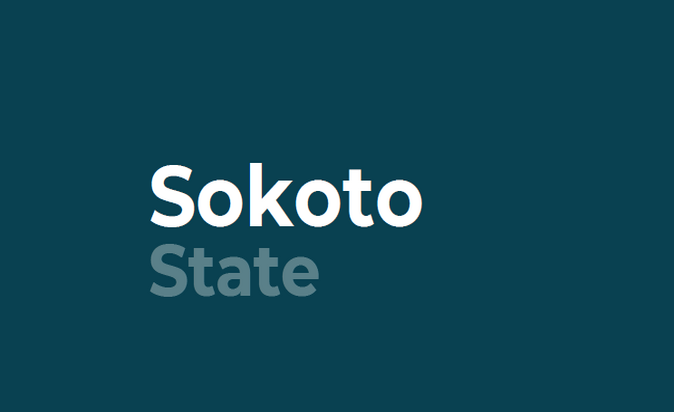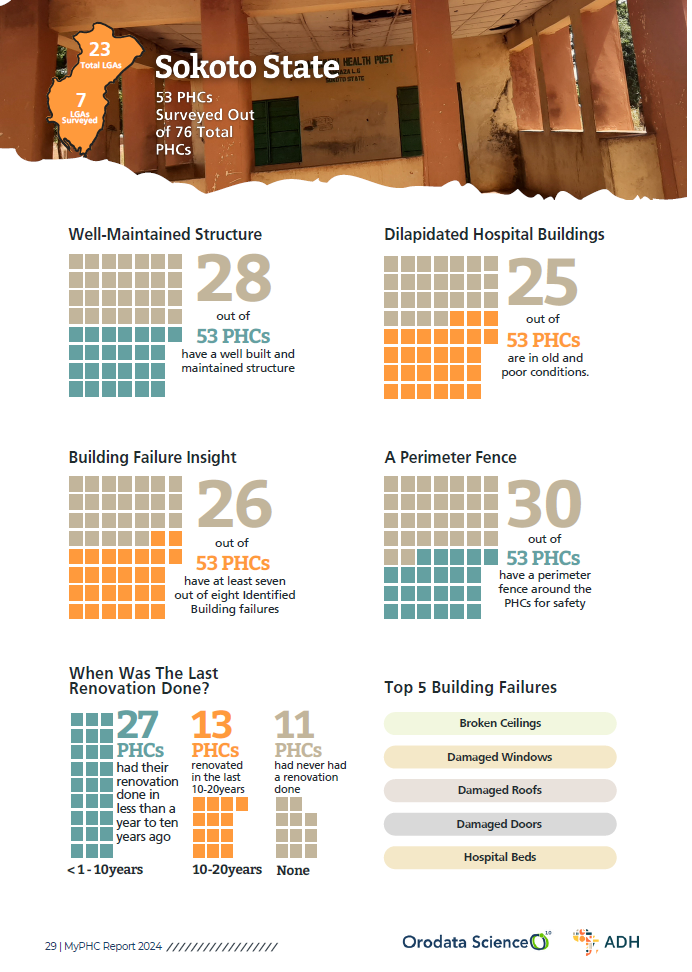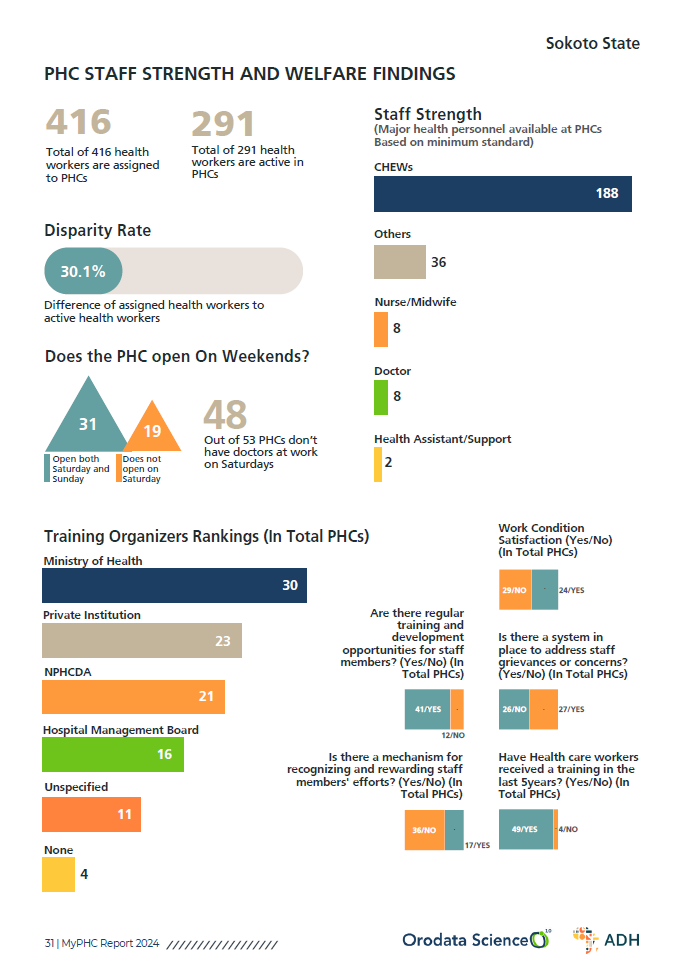Sokoto State’s primary healthcare system faces significant challenges, with 53 surveyed Primary Healthcare Centers (PHCs) exhibiting critical infrastructure deficiencies. Only 28 PHCs have been renovated within the last 1-10 years, while 13 have undergone renovation within 10-20 years, and 11 remain in a state of disrepair, having never been renovated. Half of these PHCs exhibit at least 7 out of 8 identified building failures, highlighting a critical need for infrastructure improvements to ensure safe and effective healthcare delivery.
The state’s PHCs demonstrate notable gaps in facilities and resources, with only 35 out of 53 PHCs possessing clean and functional restrooms, and waste primarily disposed of by burning or in pits. Water sources are mainly boreholes or underground wells, and power supply is either solar or non-existent, underscoring significant gaps in sanitation, water, and energy resources.
Medical supply and transport challenges persist, with half of the surveyed PHCs facing shortages of 6 out of 18 identified medical supplies, including oxygen gas, GV ink, drip stands, thermometers, and working fridges for vaccines. The lack of essential medical supplies and reliable transportation means significantly hampers the efficiency and effectiveness of healthcare delivery.
Labour ward equipment and bed availability are also limited, with only 7 PHCs having functional ambulances, and 41 PHCs having 1-10 beds available. These limitations in emergency transport and bed availability further strain the healthcare system, impacting patient care quality and outcomes.
The health workforce in Sokoto faces significant disparities, with 416 assigned health workers, but only 291 active, resulting in a disparity rate of 30.05%. This gap, coupled with the majority of PHCs lacking doctors and only 31 PHCs open on weekends, severely affects the quality and availability of healthcare services.
Staff composition and work conditions are also concerns, with low work condition satisfaction reported in only 24 PHCs, indicating poor work environments and contributing to staff grievances and low morale. The staff strength across PHCs includes 188 CHEWs, 8 nurses/midwives, 8 doctors, 2 health assistants/support, and 36 others, with no community health officers or pharmacy technicians.
Training, development, and recruitment opportunities are limited, with only 41 PHCs offering regular training and development opportunities, and 17 PHCs having mechanisms for recognizing and rewarding staff efforts. Staff training in the last five years has been reported in 49 PHCs, with the majority conducted by the Ministry of Health, Private Institutions, NPHCDA, and Hospital Management Board.
Patient usage and community engagement are moderate, with an average daily usage of 44 patients per PHC, and 565 communities utilizing these facilities. However, the estimated mortality over the last 5 years is 1,954 persons, and patient affordability is at 19%, indicating significant mortality rates and patients’ inability to afford treatment.
Referrals and reasons for referrals are concerning, with 73,815 referrals recorded over the last year, primarily due to complications, infrastructure lack/inadequacy, and special cases. This high volume of referrals points to critical issues in primary healthcare capabilities and infrastructure in Sokoto.
The quality of treatment and services in Sokoto is uneven, with 31 PHCs rated Excellent-Good and 22 PHCs rated Poor-Very Poor. Immunization services are rated Excellent-Good in 38 PHCs and Poor-Very Poor in 15 PHCs. The general rating indicates 22 PHCs are Excellent-Good while 31 are Fair-Very Poor, reflecting a need for improvement in overall healthcare services and infrastructure.
Overall, Sokoto State’s primary healthcare system faces significant challenges in infrastructure, medical supplies, health workforce, staff composition, training, patient usage, referrals, and quality of treatment. Addressing these gaps is crucial to ensuring safe and effective healthcare delivery and improving the health outcomes of Sokoto’ s residents.
For a more detailed analysis and recommendations, download the report. [Click here]



